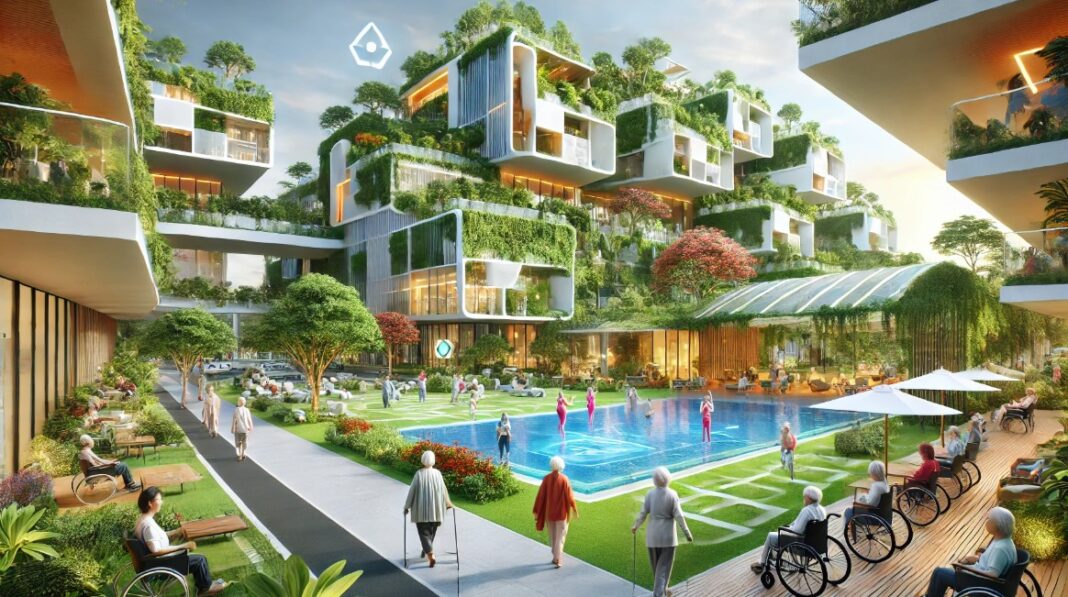Senior communities are now dynamic environments that promote wellness and quality of life. The right design can significantly impact residents’ well-being, encouraging social interaction and providing tranquility, security, and ease of use. Modern senior communities offer a home-like atmosphere with soft furnishings, warm colors, and personalized decor, promoting a holistic approach that includes family and professional care.
As we look towards the future, the design of senior living communities is undergoing significant transformation. This change is driven by the need for environments that provide safety and comfort and enhance the quality of life for seniors. With trends leaning towards inclusivity and technological advancements, the landscape of memory care in Florida, among other locations, is set to become more vibrant and engaging over the next decade.
Senior communities are transforming how seniors live by incorporating design, architecture, and technology advancements. They aim to foster personal and communal connections, redefining the concept of growing older with dignity and joy. Emerging trends will shape these communities for wellness, engagement, and independence.
Design Trends Shaping Modern Senior Living Communities
Contemporary design trends in senior living communities emphasize openness, connection to nature, and considerations of aging in place. Open floor plans, communal areas, natural light, and accessible outdoor spaces promote interpersonal interactions and reduce feelings of isolation. These flexible and adaptable designs inspire residents with multi-level accessibility, thoughtful layout planning, and nature integration. These features enhance cognitive and mental well-being, ensuring long-term comfort and functionality.
Innovative Architectural Techniques
Modern architecture in senior living communities prioritizes accessibility through universal design principles, such as level flooring, widened doorways, and handrails. These designs ensure safety and independence for residents, promoting an active lifestyle even in later years. Multi-generational housing concepts foster interactions across age groups, enhancing community spirit and promoting lifelong learning. Flexible and modular living spaces cater to residents’ needs, allowing active environmental influence.
Sustainability in Senior Living Design
The modern approach to senior living design prioritizes sustainability and eco-friendly practices, incorporating renewable energy sources, energy-efficient systems, and green spaces. These elements reduce energy costs and environmental impact while promoting resident health and well-being through therapeutic benefits, relaxation, physical activity, and horticulture therapy. These green spaces create visual appeal and strengthen the connection between nature and human well-being.
Technological Innovations in Elderly Care Environments
Technology is revolutionizing senior living communities by enhancing efficiency, convenience, and self-reliance. Smart home technologies and automation systems manage daily activities, scheduling health checks and environmental settings. Health monitoring systems integrate wearable devices and smart appliances, providing safety and prompt emergency responses. Digital connectivity strengthens family ties, ensuring emotional closeness despite physical distances.
Personalization and Community Building
Senior living spaces focus on personalization and community building to cater to individual preferences and changing health needs. This personalization creates ownership and pride in the living space while also fostering a vibrant community life through tailored fitness programs, clubs, and workshops. Customized diets, wellness plans, and social events are also crafted to promote individual well-being.
Challenges and Considerations for the Future
Design advancements in senior living communities offer numerous benefits but present challenges like cost and affordability. To ensure resident happiness, communities must balance privacy with social interaction, balancing individual needs with collective engagement. Cultural sensitivity and inclusivity are crucial as the demographic of senior living communities diversifies. This ensures all residents feel respected, understood, and valued.
